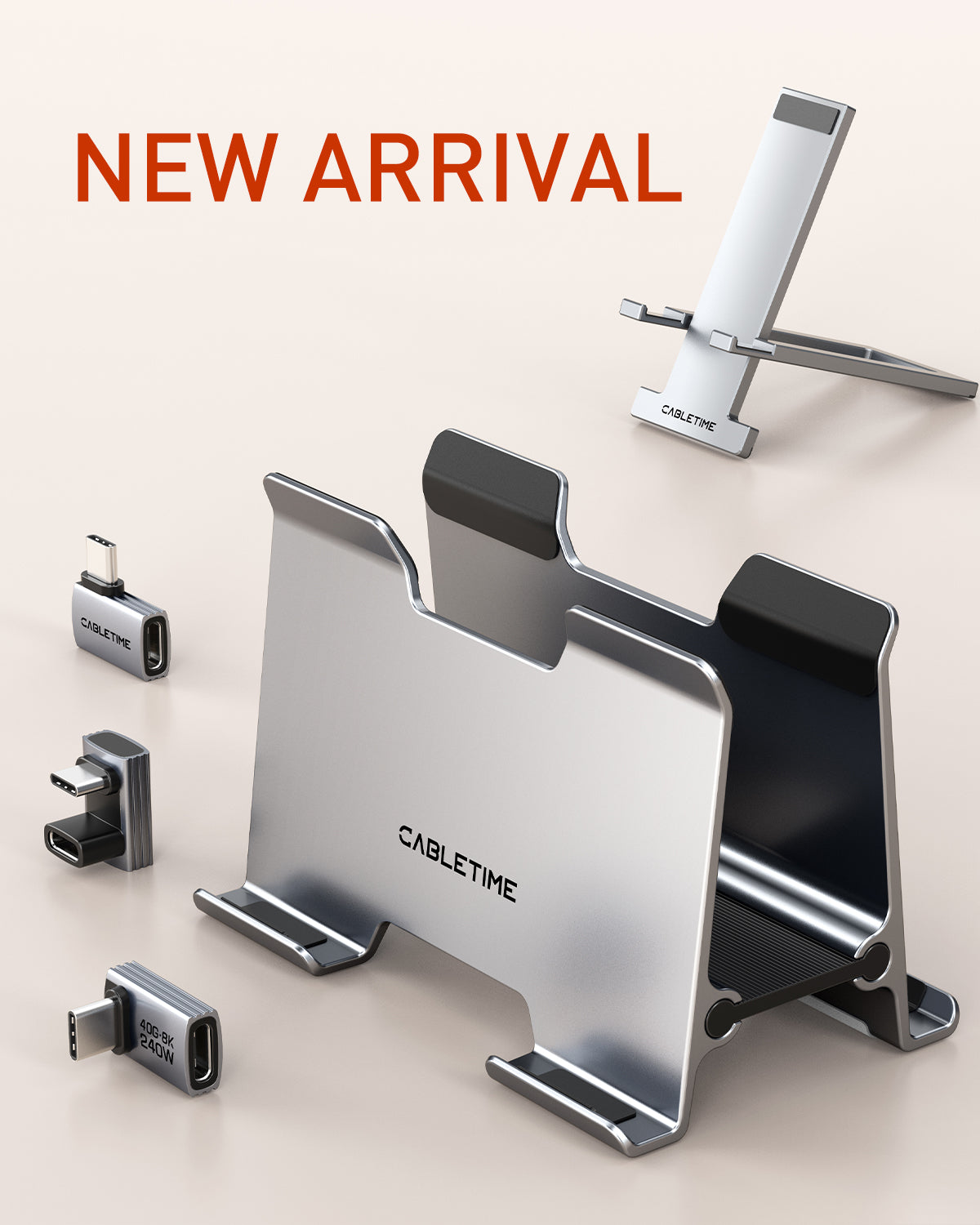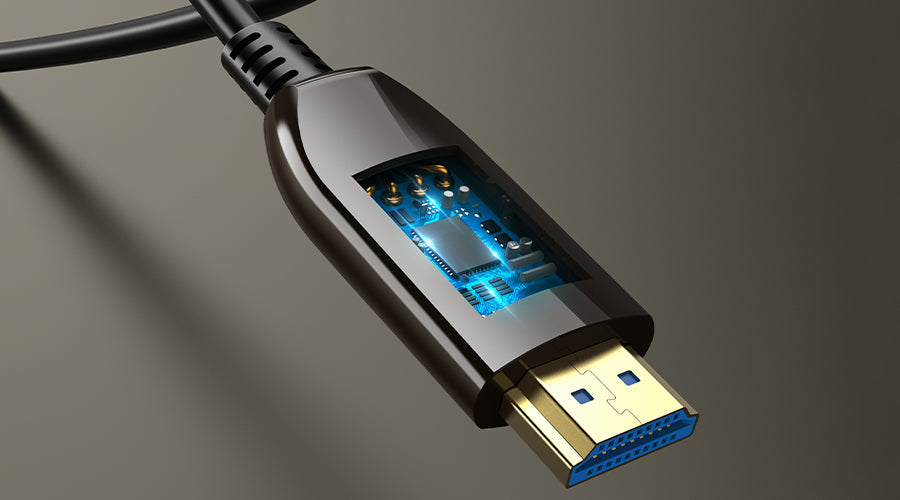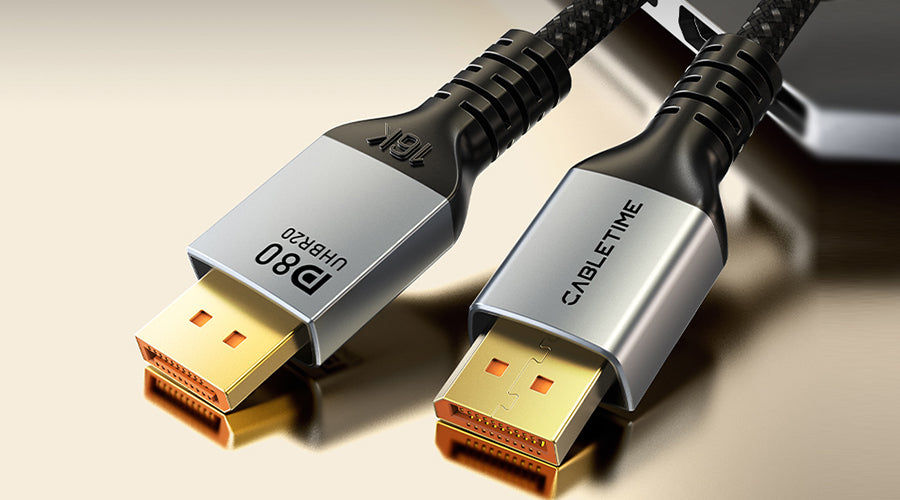HDMI ARC and Optical audio cables are two common methods of transmitting audio signals from one device to another. They are often used to connect soundbars, speakers, or home theatre systems to TVs, gaming consoles, or other devices. HDMI ARC stands for High-Definition Multimedia Interface Audio Return Channel. It is a feature of HDMI that allows audio signals to be sent and received through the same HDMI cable that connects the devices. This means that you only need one cable to connect your soundbar or speaker to your TV or gaming console, and you can also control the volume and power of both devices with one remote.
Optical audio cables, also known as Toslink or S/PDIF cables, are another way of transmitting audio signals from one device to another. They use light pulses to carry digital audio data through a thin fiber-optic cable. Optical audio cables are more resistant to electromagnetic interference and can support longer cable lengths than HDMI cables. They are commonly used to connect older devices that do not have HDMI ports.
However, they have different characteristics and capabilities that may affect the audio quality. In this article, we will compare HDMI ARC and Optical audio cables in terms of sound transmission quality, compatibility, ease of use, advantages and limitations, and how to choose according to needs.

Basic Knowledge of HDMI ARC and Optical Audio Cables
Overview of HDMI ARC Technology
HDMI ARC stands for High-Definition Multimedia Interface Audio Return Channel. It is a feature of HDMI that allows audio signals to be sent from a TV to an external audio device, such as a soundbar or AV receiver, through the same HDMI cable that is used for video. This means you can use a single HDMI cable to transmit video and audio signals between two devices, such as a TV and a soundbar. HDMI ARC also lets you control multiple devices with a single remote, such as adjusting the volume or switching the input source.

Overview of Optical Audio Cable Technology
Optical audio cables, also known as Toslink or S/PDIF cables, are fibre-optic cables that use light to transmit digital audio signals. They are typically used to connect devices with optical audio ports, such as TVs, soundbars, DVD players, or game consoles. Optical audio cables can only carry audio signals, not video signals. They are also resistant to electromagnetic interference, which can impact the quality of analogue audio signals.
Factors for Audio Quality Comparison
Sound Transmission Quality
One of the main factors that affect audio quality is the type of audio format that the cable can support. There are two types of audio formats: lossless and lossy. Lossless audio formats, such as PCM, FLAC, or WAV, preserve the original quality of the audio signal without any compression or degradation. Lossy audio formats, such as MP3, AAC, or WMA, compress the audio signal to reduce the file size but also lose some quality in the process.
HDMI ARC and Optical audio cables have different capabilities for supporting lossless and lossy audio formats. HDMI ARC can support both lossless and lossy audio formats, depending on the version of HDMI and connected devices.

Optical audio cables, on the other hand, have more limitations when it comes to supporting lossless and lossy audio formats. They can only support up to 2 channels of PCM audio, which means that they cannot deliver surround sound or multichannel audio. Optical audio cables can also support Dolby Digital and DTS, which are lossy audio formats, but they cannot support Dolby Digital Plus, Dolby TrueHD, DTS-HD Master Audio, or Dolby Atmos, which are lossless or high-bit-depth audio formats.
Therefore, HDMI ARC has an advantage over optical audio cables in terms of sound transmission quality, as it can support more channels and audio formats, especially newer and higher-quality ones.
Compatibility
Another factor that affects the audio quality is the compatibility of the cable with the devices that are connected. HDMI ARC and Optical audio cables have different levels of compatibility with various devices, such as TVs, soundbars, home theatre systems, gaming consoles, etc.
HDMI ARC is generally more compatible with newer and more advanced devices, as both devices must have HDMI ARC ports and support the same version of HDMI. However, HDMI ARC may also have some compatibility issues, as different devices may have different specifications and capabilities, such as the number of channels, the audio formats, the bandwidth, etc.
Optical audio cables are generally more compatible with older and simpler devices, as they only require both devices to have optical audio ports. However, Optical audio cables may also have some compatibility issues, as some devices may not have optical audio ports or may not support the same audio formats.
Therefore, HDMI ARC and Optical audio cables have different degrees of compatibility with different devices, and the audio quality may differ depending on the connected devices.

Ease of Use
The third factor that affects the audio quality is the ease of use of the cable. HDMI ARC and Optical audio cables have different levels of simplicity and comfort when it comes to setting up and configuring the audio connection.
HDMI ARC is generally easier to use than Optical audio cables, as it only requires one cable to connect two devices. It also allows you to control multiple devices with a single remote. HDMI ARC automatically detects the audio formats and settings that are supported by the devices and adjusts the audio output accordingly.
Optical audio cables are generally more complicated to use than HDMI ARC, as they require a separate cable to connect two devices, and they may also require additional devices, such as an audio receiver or a converter, to support certain audio formats. Optical audio cables also do not automatically detect the audio formats and settings that are supported by the devices and may require manual configuration of the audio output.
Therefore, HDMI ARC and Optical audio cables have different levels of ease of use, and the audio quality may depend on the user’s preference and convenience.

Advantages and Limitations of HDMI ARC
HDMI ARC has some advantages and limitations that may affect the audio quality and the user experience. Here are some of them:
Number of Channels and Audio Format Support
One of the main advantages of HDMI ARC is that it can support more channels and more audio formats than Optical audio cables, especially the newer and higher-quality ones. HDMI ARC can support up to 8 channels of compressed audio, such as Dolby Digital or DTS, and up to 32 channels of uncompressed PCM audio, depending on the HDMI version and the devices used. These audio formats can provide better sound quality, clarity, and immersion than the standard stereo audio.
One of the main limitations of HDMI ARC is that it may not always support the maximum number of channels and the best audio formats possible, depending on the devices that are connected. HDMI ARC requires both devices to have HDMI ARC ports and support the same version of HDMI. However, different devices may have different specifications and capabilities, such as the number of channels, the audio formats, the bandwidth, etc. Therefore, HDMI ARC may not always deliver the best audio quality possible, depending on the devices that are connected.
Device Control Functionality
Another advantage of HDMI ARC is that it allows you to control considerable devices with a single remote, such as adjusting the volume or switching the input source. HDMI ARC uses a feature called Consumer Electronics Control (CEC), which enables the devices to communicate and control each other via the HDMI cable. This means that you do not need to use multiple remotes or switch between different devices manually, which can be inconvenient and confusing.
Another limitation of HDMI ARC is that it may not always work properly or consistently, depending on the devices that are connected. HDMI ARC uses CEC, which is a standard protocol that is supposed to work with all HDMI devices. However, different devices may have different implementations and interpretations of CEC, which may cause compatibility issues or conflicts. Therefore, HDMI ARC may not always provide the best user experience, depending on the devices that are connected.
Potential Limitations
HDMI ARC also has some potential limitations that may affect the audio quality and the user experience. Here are some of them:
Active HDMI cables vs Passive HDMI cables
HDMI ARC uses HDMI cables to transmit both video and audio signals. However, HDMI cables have different types and qualities, which may affect the performance and reliability of the connection. HDMI cables can be classified into two categories: active and passive. Active HDMI cables have a built-in chip that amplifies the signal for longer distances, while passive HDMI cables do not have a chip and rely on the signal strength provided by the source device. Active HDMI cables are usually more expensive and more reliable than passive HDMI cables, especially for longer distances and higher resolutions.

However, active HDMI cables may also have some drawbacks, such as the need for external power, the possibility of incompatibility with some devices, or the risk of overheating or malfunctioning. Passive HDMI cables, on the other hand, may have benefits such as lower cost and simpler design, making them suitable for shorter cable runs.
Advantages and Limitations of Optical Audio Cables
Optical audio cables also have some advantages and limitations that may affect the audio quality and the user experience. Here are some of them:
No Electromagnetic Interference
One of the main advantages of Optical audio cables is that they are invulnerable to electromagnetic interference, which can affect the quality of analogue audio signals. Electromagnetic interference, or EMI, is a phenomenon that occurs when an electrical device emits or receives electromagnetic waves that interfere with the signal of another device.
Optical audio cables, on the other hand, are fibre-optic cables that use light to transmit digital audio signals. They can provide a clear and pure audio signal without any noise, distortion, or loss of signal caused by EMI.
Therefore, Optical audio cables have an advantage over HDMI ARC in terms of immunity to electromagnetic interference, as they can provide a better audio quality.

Audio Format Limitations
One of the major restrictions of optical audio cables is that they have more audio format limitations than HDMI ARC cables, especially the newer and higher-quality ones. Optical audio cables can only support up to 2 channels of PCM audio, which means that they cannot deliver surround sound or multichannel audio. Optical audio cables can also support Dolby Digital and DTS, which are lossy audio formats, but they cannot support Dolby Digital Plus, Dolby TrueHD, DTS-HD Master Audio, or Dolby Atmos, which are lossless or high-bit-depth audio formats.
HDMI ARC, on the other hand, can support both lossless and lossy audio formats, depending on the version of HDMI and the devices that are connected. HDMI ARC can support up to 32 channels of PCM audio, which can deliver surround sound or multichannel audio.
Therefore, HDMI ARC has an advantage over Optical audio cables in terms of audio format support, as it can support more channels and more audio formats, especially the newer and higher-quality ones.
No Video Signal Transmission
Another limitation of Optical audio cables is that they cannot transmit video signals, unlike HDMI ARC. Optical audio cables are used solely for audio transmission, which means that you need a separate cable to link the video output of your device to your TV or monitor. This may increase the cost and complexity of the setup, as you need to buy and manage two cables instead of one. It may also affect the synchronization and quality of the video and audio signals, as they may not match or align properly.
HDMI ARC, on the other hand, can transmit both video and audio signals through the same HDMI cable, which means that you only require one cable to link your device to your TV or monitor. This may reduce the cost and complexity of the setup, as you only need to buy and manage one cable instead of two. It may also improve the synchronization and quality of the video and audio signals as they are transmitted and received together.
Therefore, HDMI ARC has an advantage over Optical audio cables in terms of video signal transmission, as it can provide a more convenient and integrated connection.
How to Choose According to Needs?
The choice between HDMI ARC and Optical audio cables may depend on various factors, such as your devices, the audio formats you prefer, the cable length you need, etc. Here are some tips to help you choose the appropriate audio connection option based on your needs:
Cable Selection
The first step is to check the ports and specifications of the devices that you want to connect, such as your TV, soundbar, home theatre system, gaming console, etc. You need to make sure that both devices have the same type of audio port, either HDMI ARC or Optical, and that they support the same version of HDMI or Toslink. You also need to check the audio formats and settings that are supported by both devices, such as the number of channels, the bandwidth, the sampling rate, etc. You need to ensure that both devices can support the audio format you want to use, such as Dolby Digital, Dolby Atmos, DTS, etc.
The next step is to buy the cable that matches the type and quality of the audio port and the audio format that you want to use. You need to buy a cable that is compatible with the version of HDMI or Toslink that your devices support and that has the appropriate length and quality for your setup. You may also need to buy additional devices or cables, such as an HDMI extender, a repeater, an active HDMI cable, an audio receiver, or a converter if your devices or cables do not support the audio format that you want to use, or if you need to extend the cable length beyond the limit.
Future Compatibility
The final step is to consider the future compatibility of your audio connection option, as technology may change and evolve over time. You need to think about the potential impact of future technological developments on your current choice, such as the availability of new devices, new audio formats, new standards, etc. You may need to upgrade or replace your devices or cables if they become outdated or incompatible with the new technology. You may also need to adapt or adjust your audio settings if they become obsolete or suboptimal with the new technology.
Therefore, you need to choose an audio connection option that is suitable for your current needs and flexible and adaptable to your future needs.
Conclusion
HDMI ARC and Optical audio cables are two common methods of transmitting audio signals from one device to another. They have different characteristics and capabilities that may affect the audio quality and the user experience. However, Optical audio cables may also have some limitations, such as the inability to transmit video signals, the need for a separate cable to connect the video output, the audio format limitations, and the manual audio output configuration. The choice between HDMI ARC and Optical audio cables may depend on various factors, such as your devices, the audio formats you prefer, the cable length you need, etc. You need to choose an audio connection option that is right for your current conditions and flexible and adaptable for your future needs.
People Also Ask
What is the best way to get Dolby Atmos sound?
The best way to get Dolby Atmos sound is to use a multi-speaker setup with ceiling speakers or upward-firing speakers and a dedicated AV receiver that can decode Dolby Atmos signals. This will give you the most realistic and accurate sound placement and movement in your room. However, this option may also be the most expensive and complicated to install.
Can you get Dolby Atmos through Optical?
No, you cannot get Dolby Atmos through optical. Optical digital connections (also called Toslink) do not support Dolby Atmos signals. To get Dolby Atmos sound, you need to use an HDMI eARC connection from your TV to your soundbar or receiver. HDMI eARC (Enhanced Audio Return Channel) is an advanced version of HDMI ARC that can transmit higher-quality audio formats like Dolby Atmos..
Is the soundbar better with optical HDMI or Bluetooth?
For Dolby Atmos sound, a soundbar with HDMI is better than an optical or Bluetooth soundbar. As mentioned above, optical does not support Dolby Atmos, and Bluetooth may have lower sound quality and latency issues. HDMI can deliver the best sound quality and compatibility with Dolby Atmos soundbars.
Can HDMI cable cause sound problems?
Yes, an HDMI cable can cause sound problems if it is damaged, faulty, or incompatible with your devices. Some common sound problems caused by HDMI cables are no sound, distorted sound, audio lag, or audio dropouts. To avoid these problems, you should use a high-quality HDMI cable that meets the specifications of your devices, such as HDMI 2.1 for 4K and 8K TVs, and check the cable for any physical damage or loose connections.






2 comments
Alex Kosh
Зачем нужно было писать столько мног, если нет конкретного овета на вопрос: “что лучше?”, Можно было написать :“необходимо выбрать вариант аудиоподключения, который подходит для ваших текущих потребностей”
Fernando
Buenas tardes. ¿Se puede obtener un sonido dolby atmos de un vídeo reproducido en un televisión(que tiene salida HDMI arc) con un adaptador HDMI a salida óptica conectándolo con cable fibra óptica a unos altavoces que no tienen entrada HDMI arc?. Gracias
Leave a comment
This site is protected by hCaptcha and the hCaptcha Privacy Policy and Terms of Service apply.